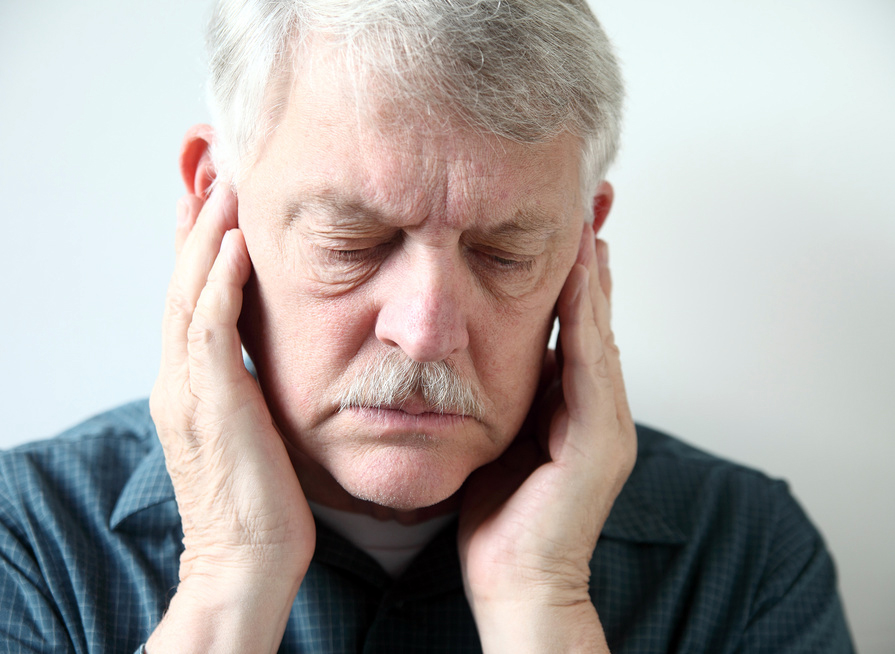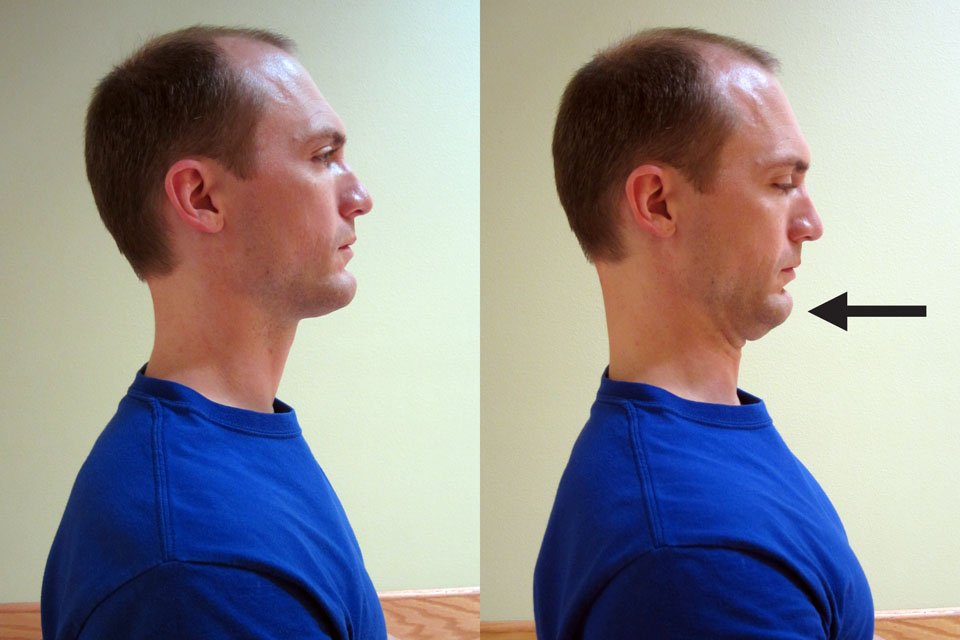Pain in your jaw or side of your head is often associated with temporomandibular joint syndrome which is also known as TMJ pain. It’s often referred to as TMJD or temporomandibular joint disorder. The causes of TMJ pain can be highly variable and are often multifactorial. Pain can be mild to very severe. Learn how to recognize the symptoms of TMJ pain and how to determine the possible cause so that you can implement simple treatment techniques.
Symptoms can include:
- Pain in your jaw near the ear
- Clicking or locking of the jaw
- Pain can be on one side or both
- Pain in the ear, face or neck
- Pain while chewing (particularly, more difficult to chew food such as meat or raw vegetables like celery)
- Headache pain

Potential Causes and/or Risk Factors for TMJ Pain:
- Direct trauma, where the jaw was directly injured
- Grinding your teeth
- TMJ can develop rather quickly if there are other precipitating factors. For example, if you were to eat a series of meals that required excessive and difficult chewing.
- Over extending the jaw
- Hypermobility (in the jaw or in general) which allows for excessive movement in the temporomandibular joint
- Postural dysfunction (poor posture)
- Muscle spasms within the muscles of mastication or the chewing muscles
- Cervical mal-alignments
- Rheumatoid arthritis
- Osteoarthritis
- Certain connective tissue diseases
Although TMJ is diagnosed in both men and women, it appears to be more prevalent in women. This may be due to gender differences as women tend to have more laxity and movement in joints than men. It may be due to a combination of other anatomical and genetic differences.
Treatment for TMJ Pain
In most cases, a combination of interventions from your dentist and from a physical therapist (PT) is the best approach. The most important aspect of treatment is to determine which factors lead to the pain originally. Was there one direct causative factor, such as trauma, or is the pain associated with multiple risk factors? Due to the multifactorial nature of TMJ, often multiple treatment interventions are needed.
It’s important to have a thorough dental examination to determine if there are any specific tooth or jaw alignment issues. The dentist can also take an X-ray of the jaw to help confirm that the diagnosis of TMJ is in fact orthopaedic in nature and not related to something more serious (such as an infection or abscessed tooth). If grinding or clinching your teeth at night is associated with the pain, then the dentist can make a night splint.
From a physical therapy standpoint, it’s important to not only to address the TMJ joint, but also the head, neck, and spine. Any muscle pain or dysfunction issue can be treated with massage and soft tissue mobilization. The treatment may be intraorally to gain access to some of the deep muscle of mastication or may include addressing muscles on the outside of the head, neck, and face. Proper cervical vertebral movement will also be checked and any cervical dysfunction should be addressed.
General treatment strategies for TMJ pain include:
- Night splints.
- Use of NSAIDs, such as Ibuprofen, to address pain and inflammation.
- Ice to address pain and inflammation of the joint. I recommend icing no more than 3-5 minutes at a time because the joint is small and superficial.
- Massage. Many trigger points and muscle spasms will refer pain into the head and/or jaw. Since the likely areas of dysfunction are either cervical or intraoral, it’s best to contact a physical therapist or bodyworker that is specifically trained to treat this condition. Massage techniques range from a light relaxing massage to a deep tissue massage or utilization of acupressure points.
- Exercise. A primary treatment modality and prevention technique is exercise. This can be broken down into two primary areas: jaw mobility and cervical dysfunction.
- Specific exercises to address jaw mobility: In this exercise, you will hold your tongue at the roof of your mouth and slowly open your jaw. Only open as far as you can while keeping the tongue at the roof of the mouth and stopping before any clicking or grinding. It’s best to perform this exercise while looking in a mirror to insure symmetry of your mouth when opening and closing it.
- Specific exercises to address cervical dysfunction (if present): Often TMJ pain is associated with a cervical related issue. I often have my clients perform this cervical retraction exercise. Sit up straight, and retract your chin straight back with your mouth lightly closed with your tongue resting on the top of your mouth. Repeat 10-20 times.

- Focus on your posture. Poor posture is a bane of modern society. The most common example of poor posture is a forward head with rounded shoulders. This causes excessive muscular tension throughout the cervical spine, upper trapezius region, and mid-thoracic area which will directly affect the positioning of the jaw. Proper posture allows for the optimal alignment of your spine, head, and jaw. This is particularly important when eating. Poor posture is almost always associated with muscle knots and trigger points. Subscribe to my e-mail list to gain immediate access to my FREE resources including My Top 8 Stretches to Eliminate Neck, Upper Back, and Shoulder Pain. It’s a downloadable .pdf file with my recommended stretches and exercises to address posture. These simple exercises (with complete instructions and photos) will help you to improve poor posture and can be performed at home.
- Acupuncture. I am personally a big fan of acupuncture. It’s very useful in treating all kinds of medical conditions. It can be particularly effective in treating headaches, TMJ pain from muscle trigger points, muscle cramps, spasms, and pain as it addresses the issues on multiple layers. Acupuncture directly stimulates the muscle by affecting the nervous system response to the muscle while producing a general sense of well-being and relaxation.
- Relaxation. TMJ associated pain is often a condition associated with individuals with a high amount of emotional stress. This is likely due to associated jaw clinching. It’s important to address the underlying emotional stress that maybe contributing to the condition. This may include counseling, deep breathing techniques or performing my recommended stretches and exercises for neck and shoulder pain to generally help alleviate tension. The importance of addressing any and all contributing factors (including any psychological factors or emotional stress) cannot be overstated.
- Speak with your Physical Therapist, Physician, and/or Dentist. If you are suffering with TMJ pain, there are options. Please speak to your medical provider to determine if other causes are contributing to the problem. In severe cases, there are a myriad of surgical procedures that can be attempted to address the issue. The American Physical Therapy Association (APTA) offers a wonderful resource to help find a physical therapist in your area. In most states, you can seek physical therapy advice without a medical doctor’s referral (although it may be a good idea to hear your dentist and/or physician’s opinion as well).
Although TMJ pain can be difficult to manage, don’t give up hope! Most TMJ pain can be cured or effectively managed with proper care and by addressing the likely causative factors. Begin by implementing one or two of these treatment tips, and then assess how well they worked for you. If the technique helped, continue with it and then implement another strategy.
Have you ever experienced TMJ pain? If so, which treatments strategies have worked the best for you? Please share below.
If you have a question that you would like featured in an upcoming blog post, please comment below or submit your question to contact@thePhysicalTherapyAdvisor.com. Be sure to join our growing community on Facebook by liking The Physical Therapy Advisor!
